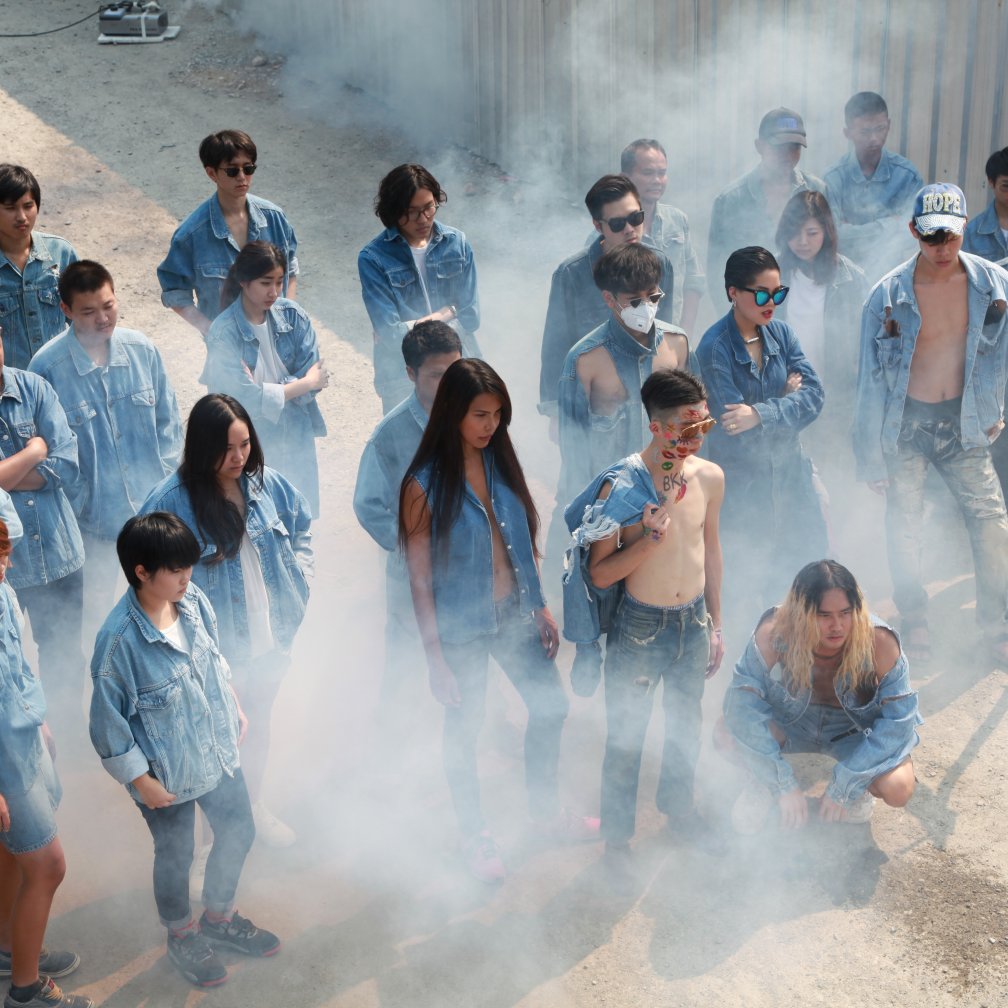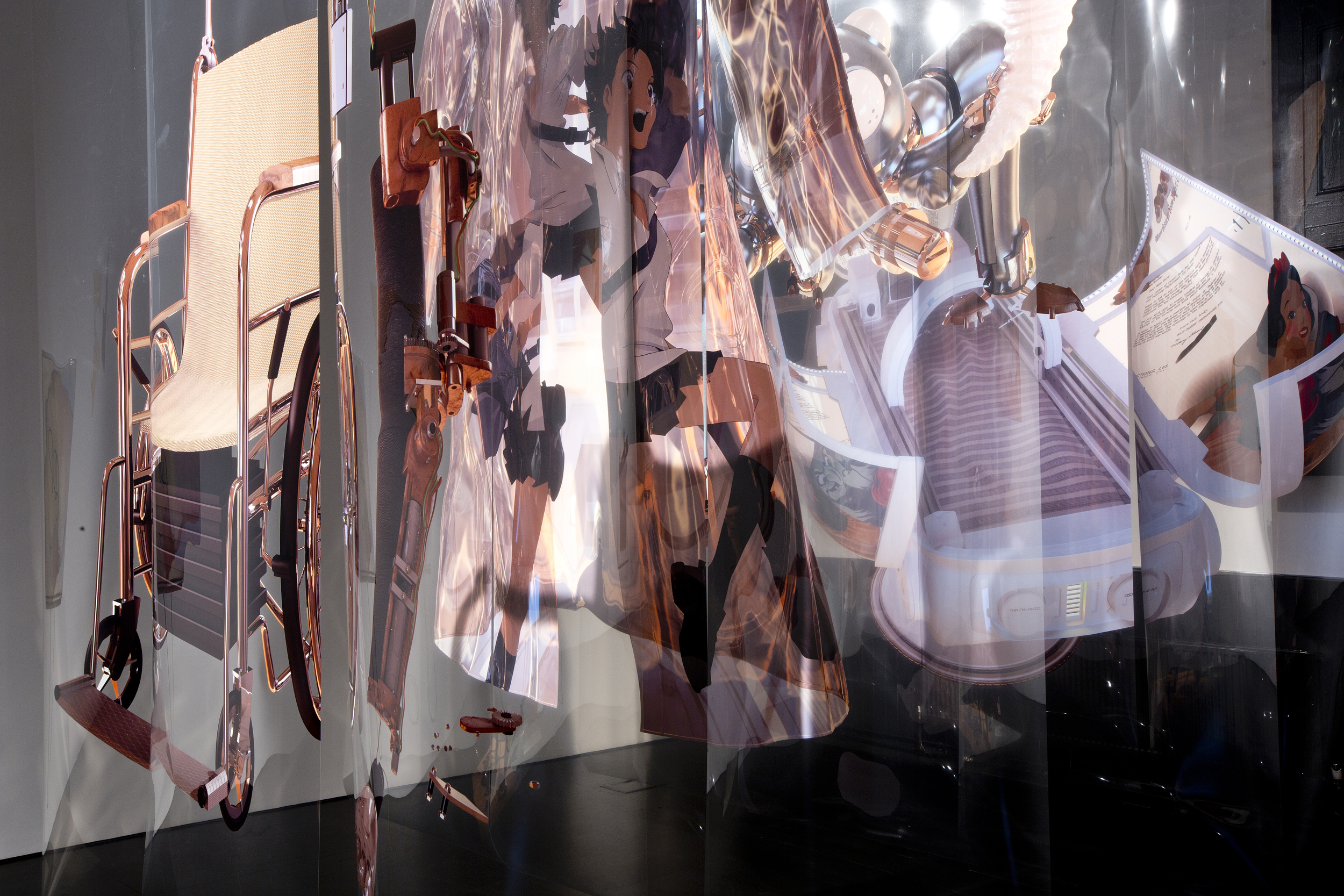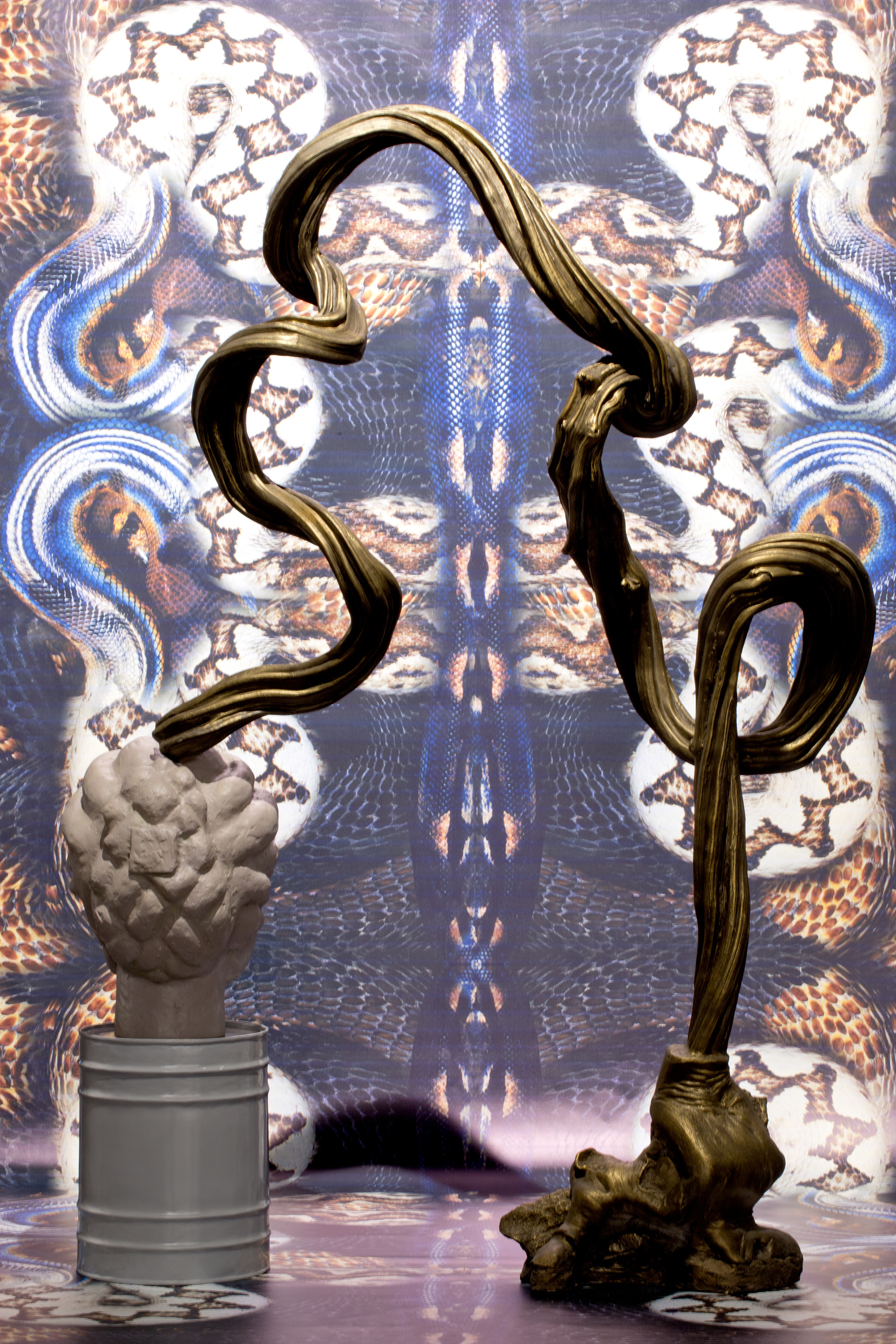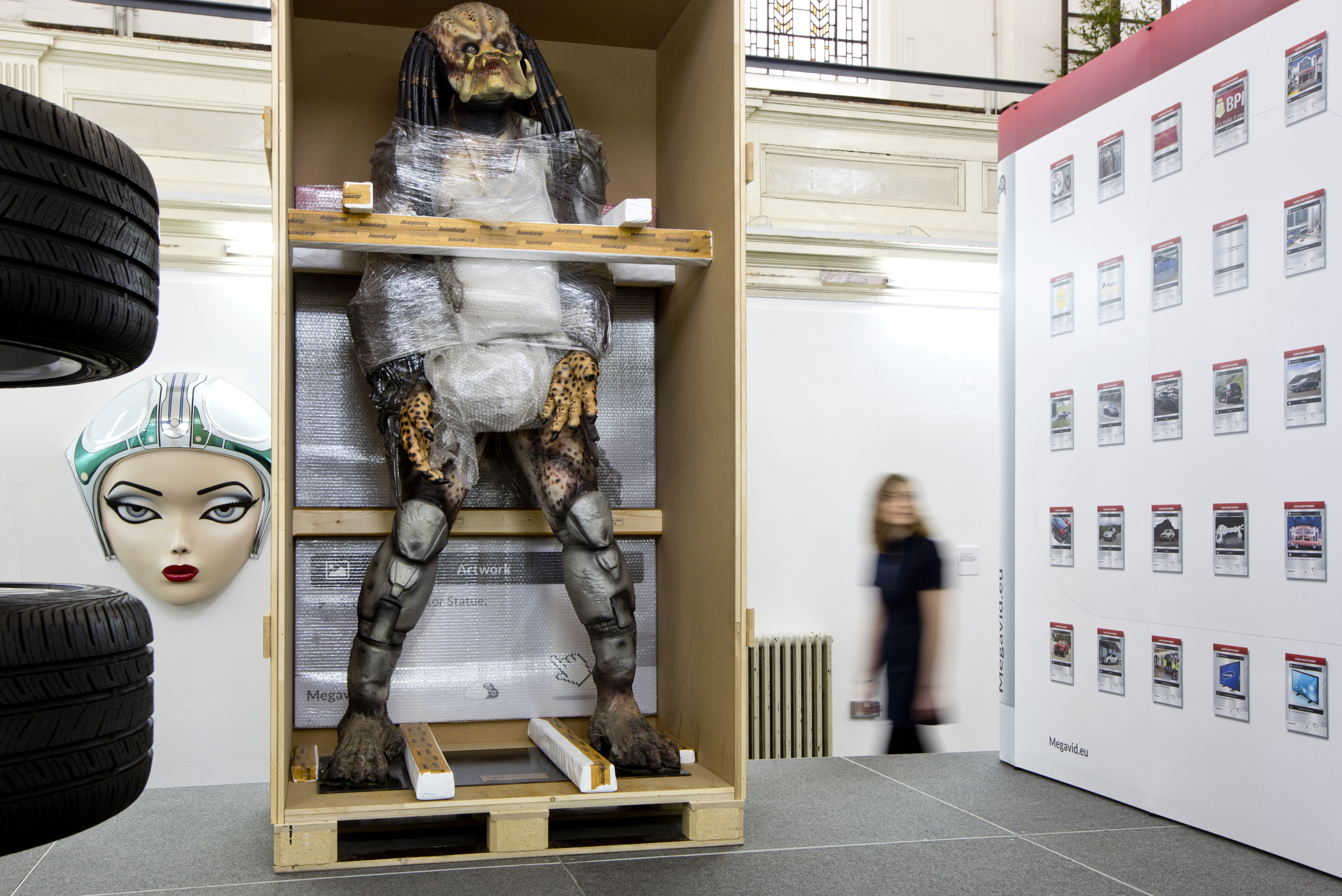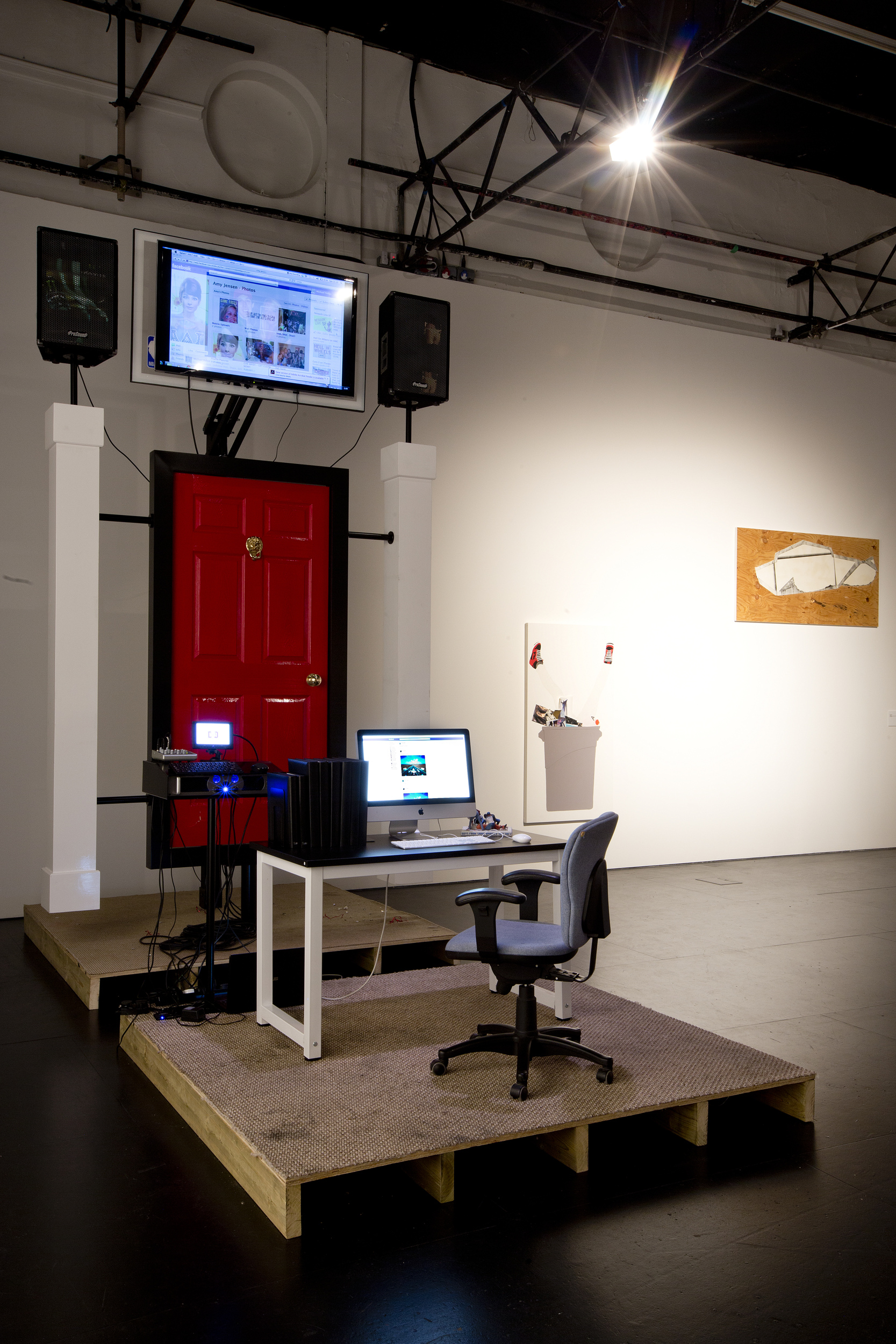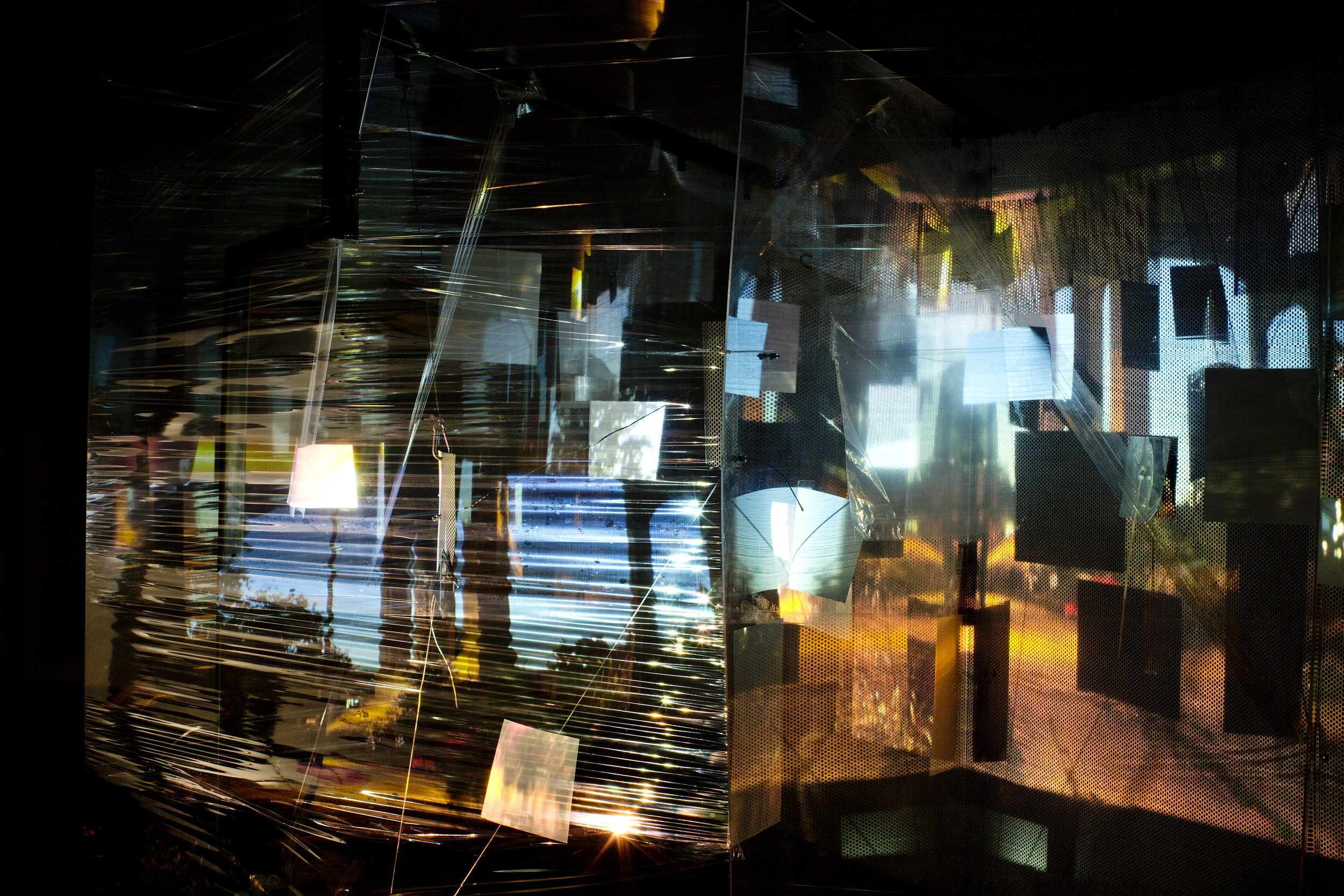The group exhibition Emotional Supply Chains features 17 artists from the Zabludowicz Collection who, in varied ways, address notions of identity in the context of our contemporary moment. It contains works made since 2000 alongside several new commissions and reworked installations of existing pieces.
My initial motivation for the development of the project emerged out of an interest in how artists were responding to the atmosphere of the ‘digital age’ in a manner which emphasised the human and subjective aspects. Rather than reinforcing the assumption that the increasing degree to which we live our lives through technology equates to a lack of ‘real’ human connection, they were producing works infused with a high degree of emotional weight and texture.
The title of the exhibition is intended to communicate the way in which our identities can be seen as wholes constructed from many parts. Much like a product assembled from various components, our sense of self is formed from our shifting interactions with the images, objects and experiences that we are exposed to — an idea that crosses the disciplines of art, literary theory, psychoanalysis and neuroscience. As Sherry Turkle wrote in her important 1995 study Life on the Screen: Identity in the age of the Internet, we are all ‘a multiplicity of parts, fragments, and desiring connections’. This idea is not native to the digital age, of course, but my interest was in how this phenomena may be accelerated or emphasised by the use of technology.
Working from this departure point led me to artists whose practices used this notion of unstable identities to make highly distinctive projects. I soon realised that a common theme found in their approach was the way in which they tested ideas of artistic authorship. If we are all made up of multiple characters, then surely artistic personalities could also be (and perhaps should be) investigating different modes of authorship?
Today, with the prevalence of media that allows millions of users worldwide to create images, text, video and audio, and then rapidly share them with potentially millions of others, it might be said that we have moved from the notion of mass consumption in the second half of the twentieth century into an age of mass cultural production. In this terrain of ‘prosumerism’ how might contemporary artists pursue tactics to stand out from the crowd? Do they fabricate the extraordinary or instead remodel the mundane? Perhaps they combine both.
Since emerging in the 1990s the evolving platforms of social media have been central to how people shape and control mediated versions of their personalities. Several artists in the exhibition reflect on these structures to reveal the complex array of images and emotions found in an individual’s interaction with a network. Frances Stark candidly presents the interwoven realities of her life as an artist, mother, and teacher in Los Angeles. This takes the form of drawings, collages, PowerPoint slide shows, videos and performances. In recent years it has also included ‘performing’ on Instagram under the handle @therealstarkiller. Here she tests the potential for intimacy, humour, and letting off steam. Stark prints out selected images from this feed and displays them as photographs in Plexiglas, isolating them from the context of posts and comments, making them more strange and more poetic.
Ann Hirsch examines the influence of technology from a feminist position, drawing on her own experiences of identity formation. A new video installation Playground (The Beginning) presents a conversation between two characters played out in typed text on two old CRT computer monitors set in a sculptural arrangement evoking a 1990s home office. Based on Hirsch’s adolescent experiences in AOL chatrooms, where she formed a relationship with an older guy, the piece evokes a loss of innocence, but does so with irreverent honesty. Hirsch points to the sense of freedom she felt in the relatively unregulated spaces of early text-only social media, without seeking to sanitise the sinister potentials of faceless communication.
Ed Fornieles is a British artist fascinated by role-playing and the ways in which people portray themselves in the real world and online, especially in the coming-of-age college years. In 2011, Fornieles used Facebook to orchestrate a durational performance called Dorm Daze, a project for which he recruited 34 volunteers to populate profiles made up from ‘scalped’ details of real US students. Over the course of three months the actors inhabited these characters, and between them created plotlines of debauchery, jealousy and betrayal, offering a funhouse reflection of real online lives. For a new 2016 installation version of the piece for Emotional Supply Chains, Fornieles has produced a ‘totem’ sculpture based around a basketball stand, a red portal door, and an iMac on a desk. Visitors can watch a 5 minute video which offers summaries of the plotlines through high-pitched ‘OMG!’ teen narration, and also search a Facebook archive page allowing access to each character’s timeline.
The exhibition also includes works by artists of an older generation who have been influential pioneers in the area of identity appropriation. Pierre Huyghe’s animated video One Million Kingdoms (2001) forms part of a larger project called No Ghost Just a Shell, which was initiated with fellow artist Philippe Parreno in 1999. Together they acquired the rights from a manga agency to an androgynous figure called Annlee, with the intention of lifting a fictional character out of anonymity and into a series of international art projects. In 2001 Huyghe and Parreno decided to abandon their rights to Annlee, and viewers of the video encounter her on a journey into her own vanishing. As she walks a computer-generated lunar landscape forms from the textures of her voice: a voice synthesised from recordings of Neil Armstrong and extracts from Jules Verne’s 1864 novel Journey to the Centre of the Earth. Huyghe manages to combine a hands-on manipulation of commercial forms with the creation of an atmosphere of empathy and nostalgia, resulting in something than transcends simple comment on image circulation.
In Emotional Supply Chains I wanted to present something more than just a snapshot of art that uses digital tools or technological innovation. The intention was to contribute something to the debate around the state of artistic criticality today. To be critical as an artist does not necessarily mean being in straightforward opposition to unseemly aspects of contemporary culture such as commercialism, narcissism and cruelty. An acknowledgement of the way we all have to deal with, and deal in, such things on a daily basis is important. Some of the most provocative and stimulating art might come from artists commenting from the ‘inside of things’. It could be called a criticality based on psychologically felt experiences. In some small way Emotional Supply Chains aims to be part of the discussion around how people locate and present themselves emotionally and ethically in the digital and the tangible world.
‘Emotional Supply Chains’ is showing at London’s Zabludowicz Collection until 17 July. The exhibition is curated by Paul Luckraft.
